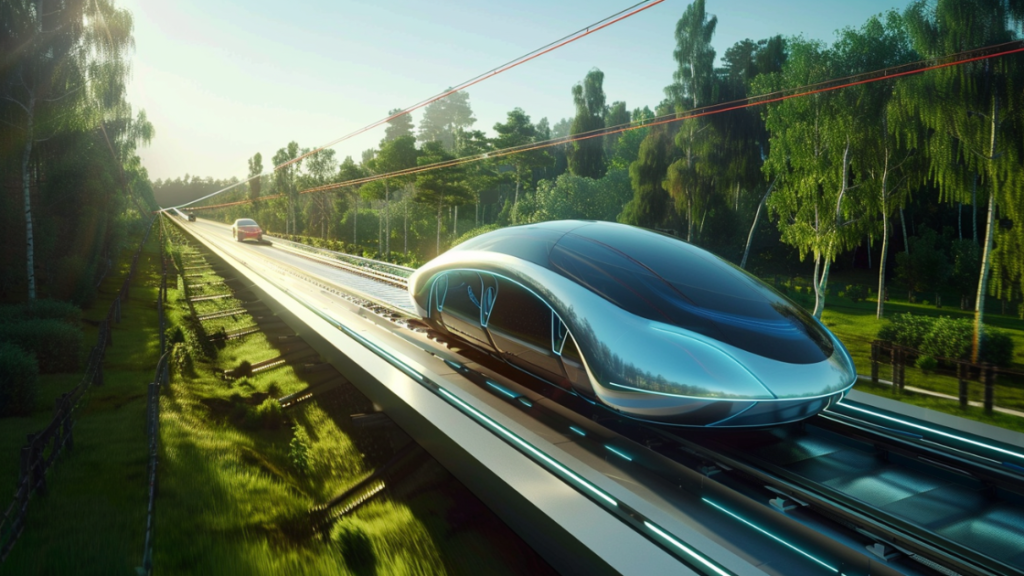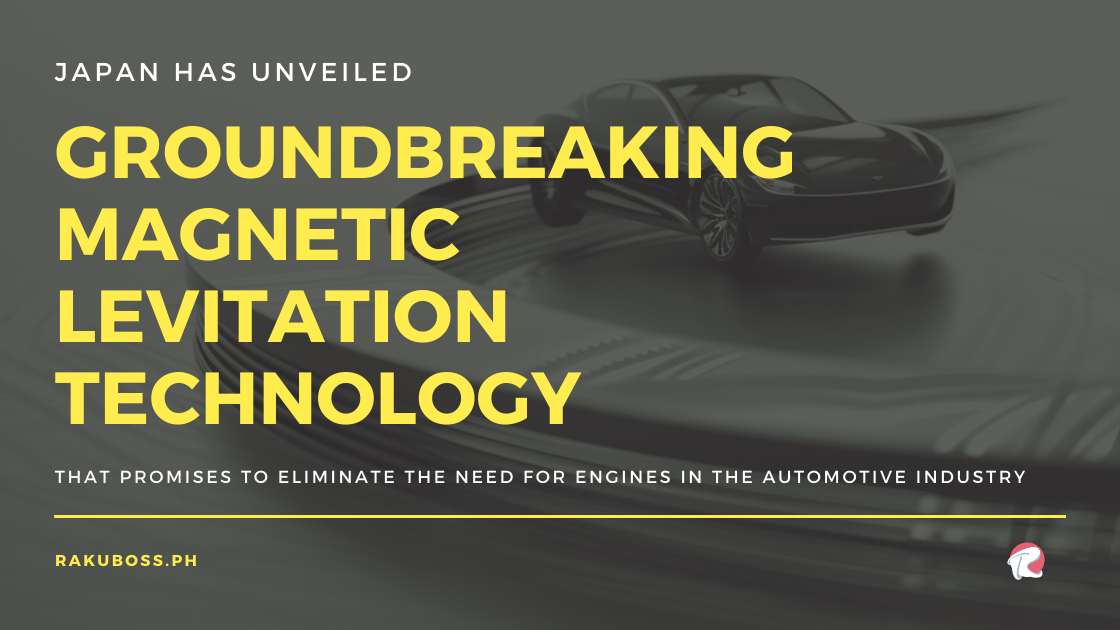Japan has introduced a revolutionary magnetic levitation technology developed by the Quantum Machine Unit at the Okinawa Institute of Science and Technology, which promises to transform the automotive industry by eliminating the need for traditional engines. This innovative system allows vehicles to levitate above specially designed tracks, drastically reducing friction and enhancing energy efficiency. With minimal energy requirements, this technology aligns with Japan’s sustainable transportation goals, potentially ushering in a cleaner and more efficient era of urban mobility. As you consider the implications of engine-free cars, you might wonder: what challenges must be overcome to make this technology a practical reality?
Key Takeaways
- Japan’s magnetic levitation technology, developed by OIST, allows cars to levitate above specially designed tracks, eliminating the need for engines and batteries.
- The technology requires power only at start-up to generate the magnetic field, after which cars can move without additional energy input.
- This system utilizes diamagnetic materials and powerful magnets, eliminating friction, significantly improving energy efficiency, and reducing operational costs.
- This innovation promises to make traditional motors and batteries obsolete, contributing to a cleaner and more sustainable transportation future.
- Despite the potential, scaling the technology and addressing challenges like vortex damping and infrastructure modifications remain significant hurdles.
Overview of Magnetic Levitation Technology
Magnetic levitation technology, developed by the Quantum Machine Unit at the Okinawa Institute of Science and Technology (OIST), represents a considerable leap in automotive innovation. This technology allows cars to levitate a few centimeters above specially designed tracks, eliminating friction and enhancing energy efficiency. The system requires power only during the start-up phase to generate the magnetic field, after which vehicles can move without additional energy input. This approach considerably reduces energy consumption compared to traditional cars, making it a game-changer in the automotive industry.
Cars utilizing this technology are made from diamagnetic materials, interacting with powerful magnets arranged along the track to facilitate levitation and movement. This interaction creates a stable magnetic field that counteracts gravitational forces, enabling the cars to glide smoothly above the track. By eliminating the need for traditional engines and batteries, this technology has the potential to make vehicles lighter, reduce manufacturing costs, and minimize environmental impact.
The implications are profound: improved energy efficiency, reduced greenhouse gas emissions, and a new era of sustainable mobility. As you consider the future of transportation, magnetic levitation technology stands out as a revolutionary force that could transform public transport and personal vehicles, aligning with global efforts to create a cleaner, more efficient automotive landscape.
Benefits for the Automotive Industry
Introducing magnetic levitation technology in the automotive industry promises several notable benefits. By eliminating the need for traditional engines and batteries, magnetic levitation technology makes vehicles lighter and more energy-efficient. This reduction in weight and the removal of friction between the vehicle and the surface considerably enhance energy efficiency, lowering operational costs and contributing to more sustainable transportation practices.
The absence of friction allows for smoother rides, minimizes noise and vibrations, potentially increases vehicle speeds, and improves overall performance compared to conventional vehicles. This technology aligns with global efforts to reduce greenhouse gas emissions by providing a cleaner alternative to internal combustion engines. Without the need for engines and batteries, the environmental impact of battery production and disposal is also decreased.
In the automotive industry, this transformative shift in vehicle design and functionality may disrupt existing manufacturing processes, encouraging investment in new, eco-friendly transportation solutions.
As cities evolve, magnetic levitation technology paves the way for a future where vehicles glide effortlessly along urban landscapes, supporting sustainable transportation goals and redefining the standards for efficiency and innovation in the automotive industry.
Environmental Impact and Sustainability

Japan’s groundbreaking magnetic levitation technology will significantly reduce greenhouse gas emissions by eliminating the need for vehicle internal combustion engines. This innovation, developed by the Okinawa Institute of Science and Technology (OIST), utilizes diamagnetic materials and powerful magnets to achieve levitation, considerably enhancing energy efficiency and lowering energy consumption.
This technology minimizes the environmental impact associated with their production and disposal by eliminating the need for traditional engines and batteries. Reducing friction in maglev vehicles not only increases speed but also minimizes energy loss, contributing to a smaller carbon footprint during operation.
This approach aligns perfectly with global sustainability goals, promoting cleaner, eco-friendly alternatives for urban transportation systems. The change towards magnetic levitation technology is essential for reducing greenhouse gas emissions and achieving a more sustainable future.
With this technology, vehicles’ environmental impact will drastically decrease as they no longer rely on fossil fuels or large battery packs. Magnetic levitation is a key component in the shift to more environmentally friendly transportation, supporting a cleaner and more energy-efficient urban landscape.
As cities evolve, this technology will significantly meet sustainability targets and create a greener future.
Challenges and Limitations
As you explore the promising world of magnetic levitation cars, several significant challenges and limitations emerge. One of the primary engineering challenges is scaling the current small-scale prototypes for everyday use. This involves addressing the intricate issue of reducing kinetic energy at the surface level, which is essential for efficient movement. Advanced technology and extensive research are necessary to achieve this, including developing effective vortex damping to prevent energy loss in oscillating systems, ensuring stability during operation.
The durability and efficiency of the materials used in the magnetic levitation system also pose a significant hurdle. Ongoing research is required to improve the performance of these materials, which are still in the development phase.
Additionally, the infrastructure needed to support magnetic levitation cars is a major barrier. Significant modifications and investments will be necessary to accommodate this new technology, which cannot be integrated into existing transportation systems.
These challenges highlight the complexity of evolving magnetic levitation technology from a conceptual phase to widespread adoption, emphasizing the need for continued innovation and investment in engineering, materials, and infrastructure.
Future of Transportation in Japan
With the successful development of magnetic levitation technology by the Quantum Machine Unit at the Okinawa Institute of Science and Technology (OIST), Japan is on the cusp of a transportation revolution. This innovation promises to transform the automotive industry by eliminating the need for traditional engines and batteries, greatly enhancing energy efficiency and speed.
As you envision the future of transportation in Japan, imagine cars gliding effortlessly above specially designed tracks, minimizing friction and energy consumption. The magnetic levitation technology requires power only during the startup phase to generate the magnetic field, after which vehicles can move without ongoing energy input. This approach reduces overall energy consumption and makes transportation smoother, quieter, and vibration-free.
Implementing this technology will revolutionize urban mobility, reducing traffic congestion and improving accessibility to remote areas. It aligns perfectly with Japan’s innovative city initiatives and sustainable transportation goals.
With continued research and development, magnetic levitation could become a cornerstone of Japan’s public transportation systems, making the country a leader in eco-friendly and efficient transportation solutions. As this technology advances, Japan’s transportation infrastructure will become more efficient, sustainable, and environmentally friendly.
Frequently Asked Questions
How Does the Magnetic Levitation System Handle Varying Road Surfaces?
To handle varying road surfaces, the magnetic levitation system relies on induced eddy currents in a conductor, such as an aluminum rail, which creates a stable levitation force regardless of the road’s surface irregularities, ensuring smooth and consistent movement.
What Materials Are Used to Construct the Tracks and Vehicles?
Powerful magnets arranged in a grid pattern will be used on the tracks to construct the tracks and vehicles in magnetic levitation systems. The vehicles are made from diamagnetic materials like pulverized graphite, which respond to magnetic fields by creating an opposing force.
Can Maglev Cars Be Integrated With Existing Road Infrastructure?
You can’t integrate maglev cars with existing road infrastructure because they require specially designed tracks with embedded magnets to create the necessary magnetic fields for levitation, which current roads do not support.
How Does the Technology Address Safety Concerns in Case of System Failures?
When addressing safety concerns in system failures, you must ascertain whether the maglev vehicle maintains levitation and guidance even if there are multiple failures. This is achieved through redundant systems and strict control measures, such as “safe hovering” protocols, guaranteeing the vehicle can come to a controlled stop at designated safe locations.
What Is the Estimated Cost of Implementing Maglev Technology on a Large Scale?
Implementing maglev technology on a large scale is costly, with estimates ranging from $40 to $100 million per mile. Due to expensive guideways, power systems, and complex infrastructure, these costs markedly exceed conventional high-speed rail costs.






